SIGMA Integration Services: Helping Automate Bagging Oats & Increase Productivity
Complete Oats Line Integration
Introduction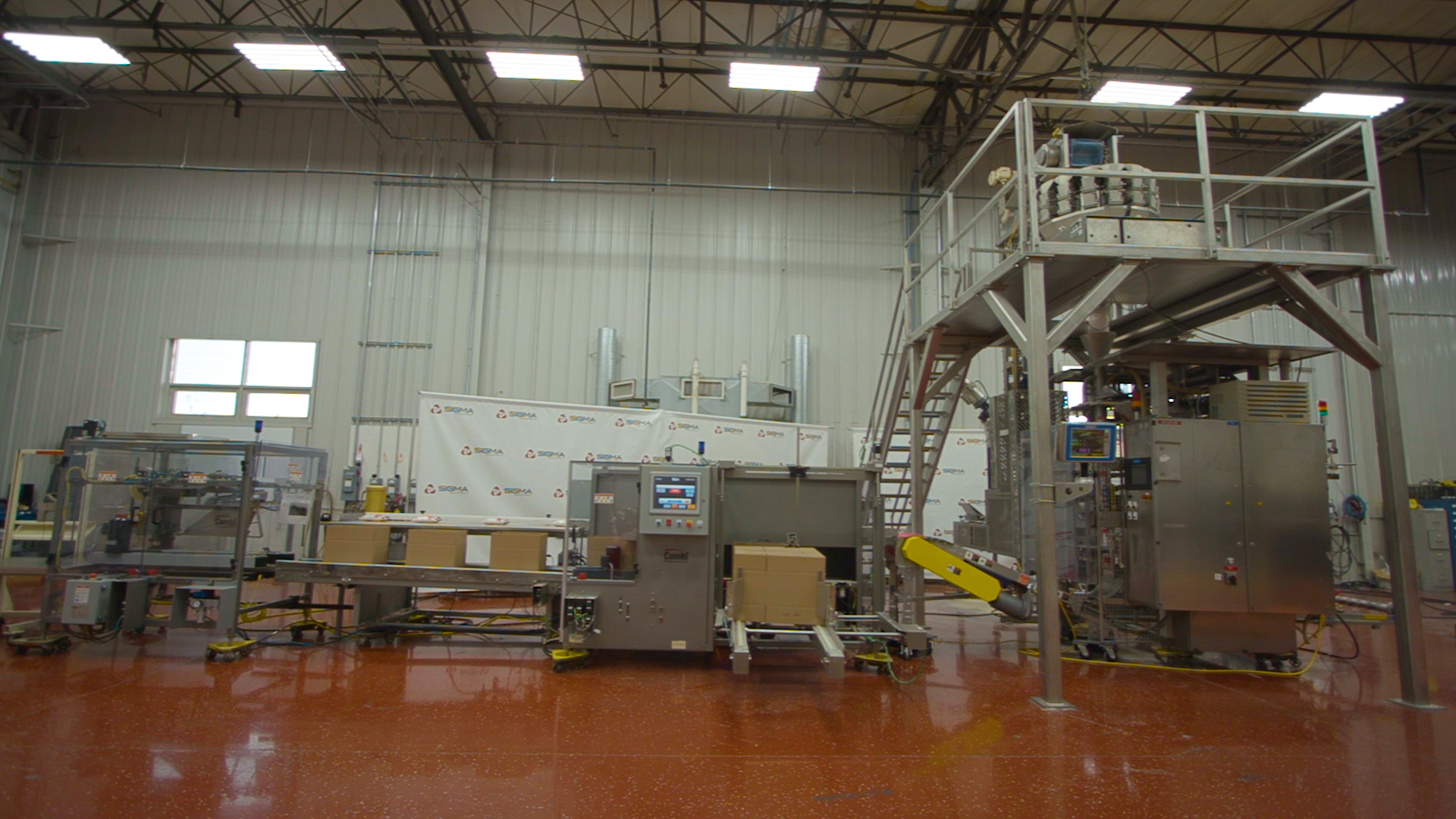
SIGMA Integration, a division of SIGMA Group, was created to help customers utilize multiple pieces of equipment by integrating them all into one production line. To begin this integration process, the customer can either purchase or rent the equipment their production needs through our SIGMA Equipment division. Once a customer’s equipment is acquired, if the piece needs to be integrated, our SIGMA Sales specialists are able to coordinate with our Integration team to employ their suite of services and combine multiple pieces of equipment either into a production line or as one complete system for customer use.
Our latest integration project began with a customer needing a processing and packaging line that could take their rolled oats directly from harvest and processing to bagging and boxing, ready for shipment. The collaboration between SIGMA Integration and SIGMA Equipment resulted in a tailored solution for the customer that helped them upgrade from packaging products by hand to an automated operation that allows them to quickly bag and ship their oats in smaller package sizes, opening them up to larger market options. This line integration includes a combination of five pieces of equipment to help weigh, fill, seal, package, and box bags of oats as well as the ability to conveniently stop and start line operation from a centralized control panel.
Key Successes / Takeaways
From the consultative sales approach provided by the SIGMA Equipment team to the complete line integration of the equipment, there were multiple success stories within this project. However, the key successes of this integration project included:
- Rental solutions that allowed the customer to scale and get their equipment quickly and affordably.
- Custom building and forming equipment to fit specifications to minimize product loss. Increased production due to automated processes.
- Option to bag smaller volumes resulting in more opportunity for direct-to-consumer selling.
- Complete line integration ready for production.
- Safety integrations to ensure the line can be stopped and started as needed as well as removing unnecessary electrical components.
- Collaboration with the three teams to arrive at a finished product. Sustainable and affordable solution to customers’ problems due to using used equipment.
- On-site training and real-time problem solving around the integration, allowing the customer to run production immediately after receiving.
Equipment Needs
Our customer specializes in grain farming, particularly oats, for over 100 years. While seeing steady growth for their farm, the company was at the point where they needed to scale their business and look for new opportunities. Specifically, they wanted an option to individually bag the oats versus using larger totes and bags, meaning they were not able to go directly to the consumer.
This led to the search to find the right equipment for their needs and the right company to work with that would expedite the bagging process while still keeping costs low and quality high. Our customer also explained that there is an increased interest among consumers today to know where their food is being sourced from and that it is safely produced. This led to finding a way to trace the product back to the field the oats originated from.
While previously using a copacker, the owner of the oats farm determined that they could replicate the process and bring their packaging and processing systems in-house, not only to help with quality control but also to help keep operating costs as low as possible. That’s where SIGMA Equipment was introduced. After having previously gotten in contact with SIGMA Equipment and regularly receiving our emails on available equipment, a partnership began with Sr. Sales Specialist, Scott Birge.
Because our customer was new to in-house production, they were unsure of what equipment they would need to be successful. We also had to navigate the logistics of COVID-19 pandemic and being in different countries, as the oats farm is located in Canada. This meant that finding ways to communicate digitally to view equipment and approve of work was needed. “The customer sent us photos of his operation and we then discussed what he wanted to do with a production line. He wanted to go all the way from the raw product in the hopper to packaged in a box. So we did the scale, the mezzanine, the elevator into the bag all the way to the packer, finished and taped up, ready to go at the other end.” Said Birge
The SIGMA Equipment team then presented the equipment best suited for the needs. Those included:
- Smalley Stainless Steel Bucket Conveyor 12" Wide
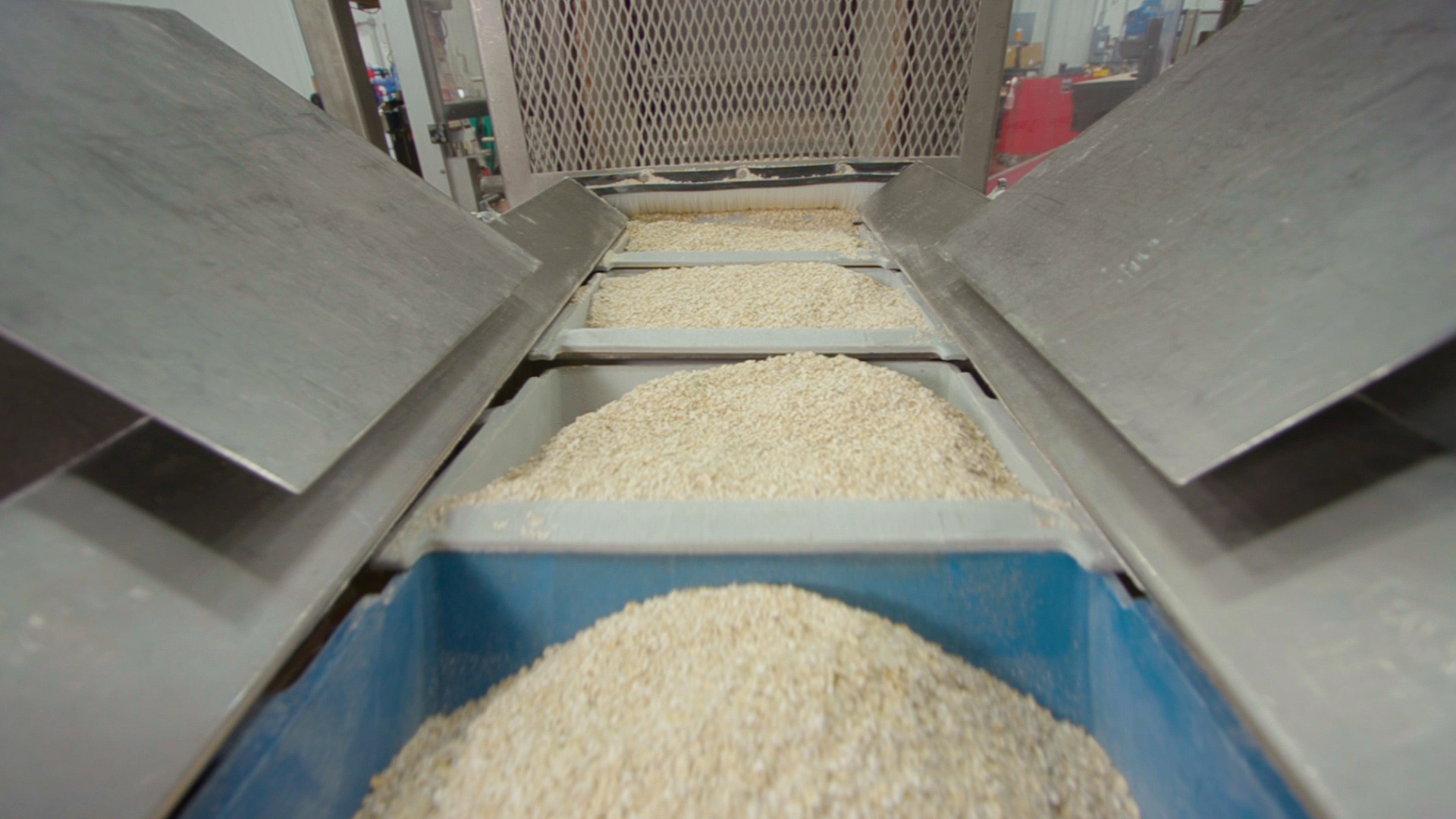
- Multipond MP 1601-FF-(2x8) SS Combination Weigher
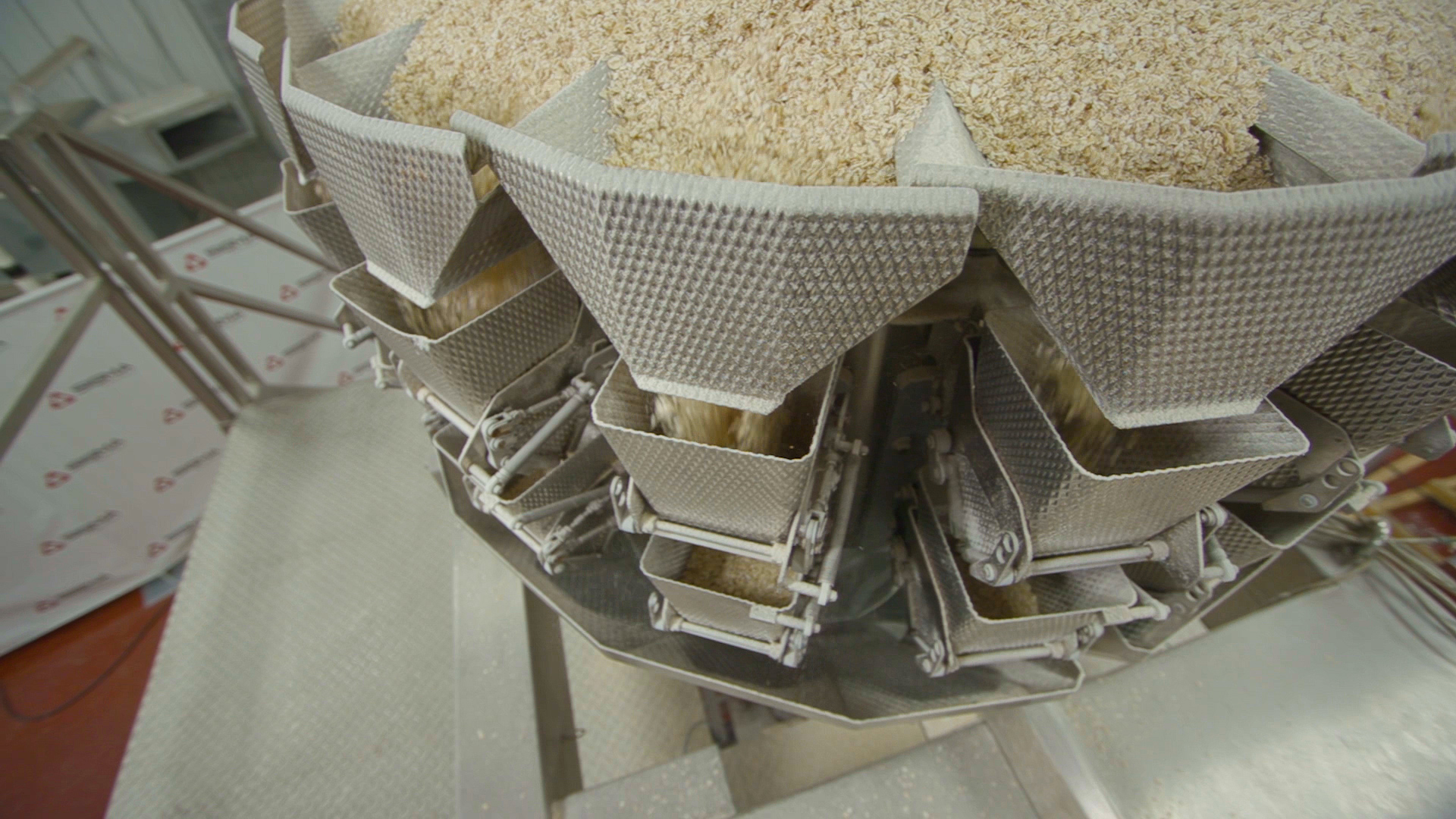
- Bosch SVB 3601 Vertical Form Fill and Seal Bagger
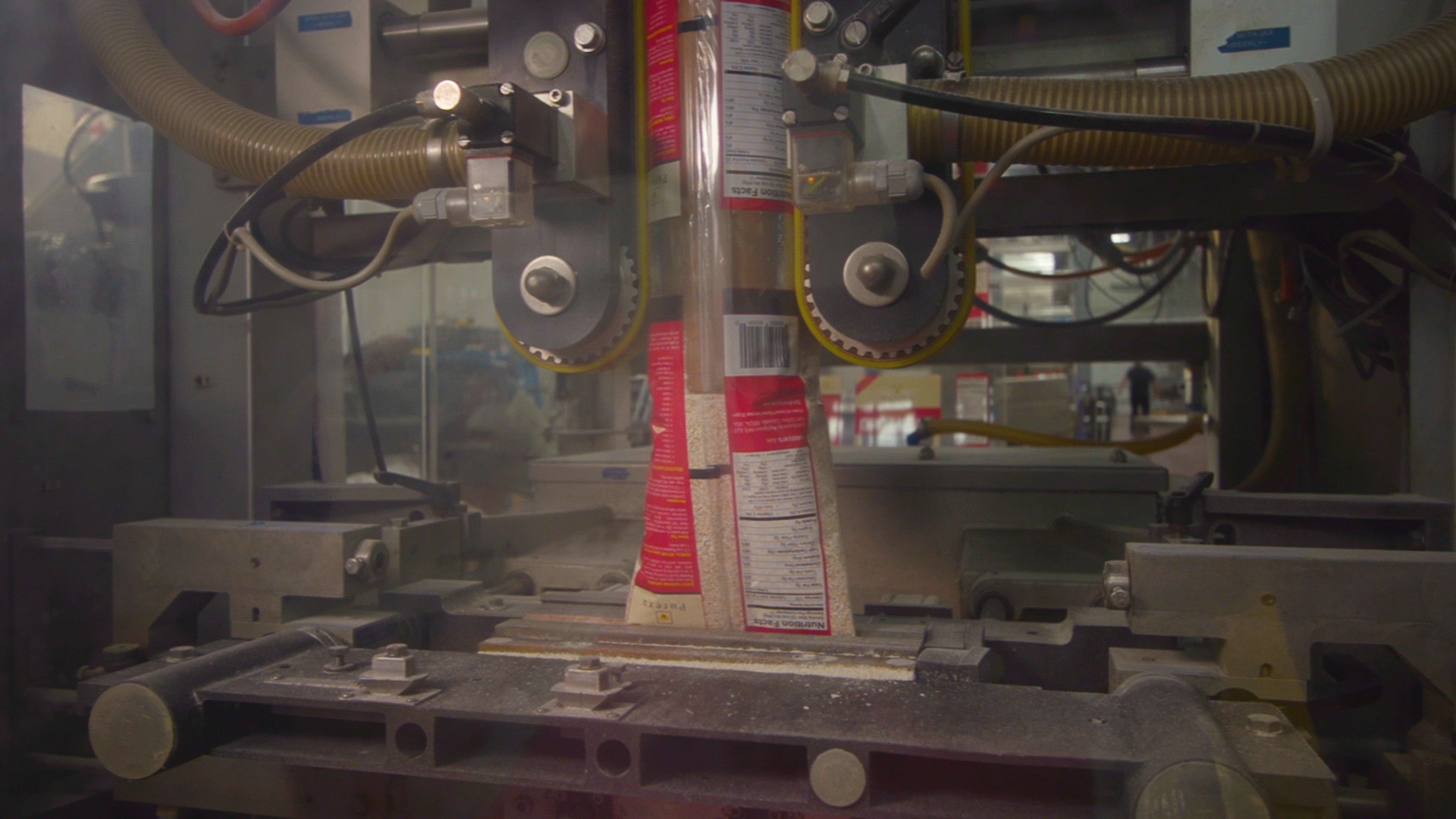
- Belt Incline Conveyor 16" Wide x 60" Long
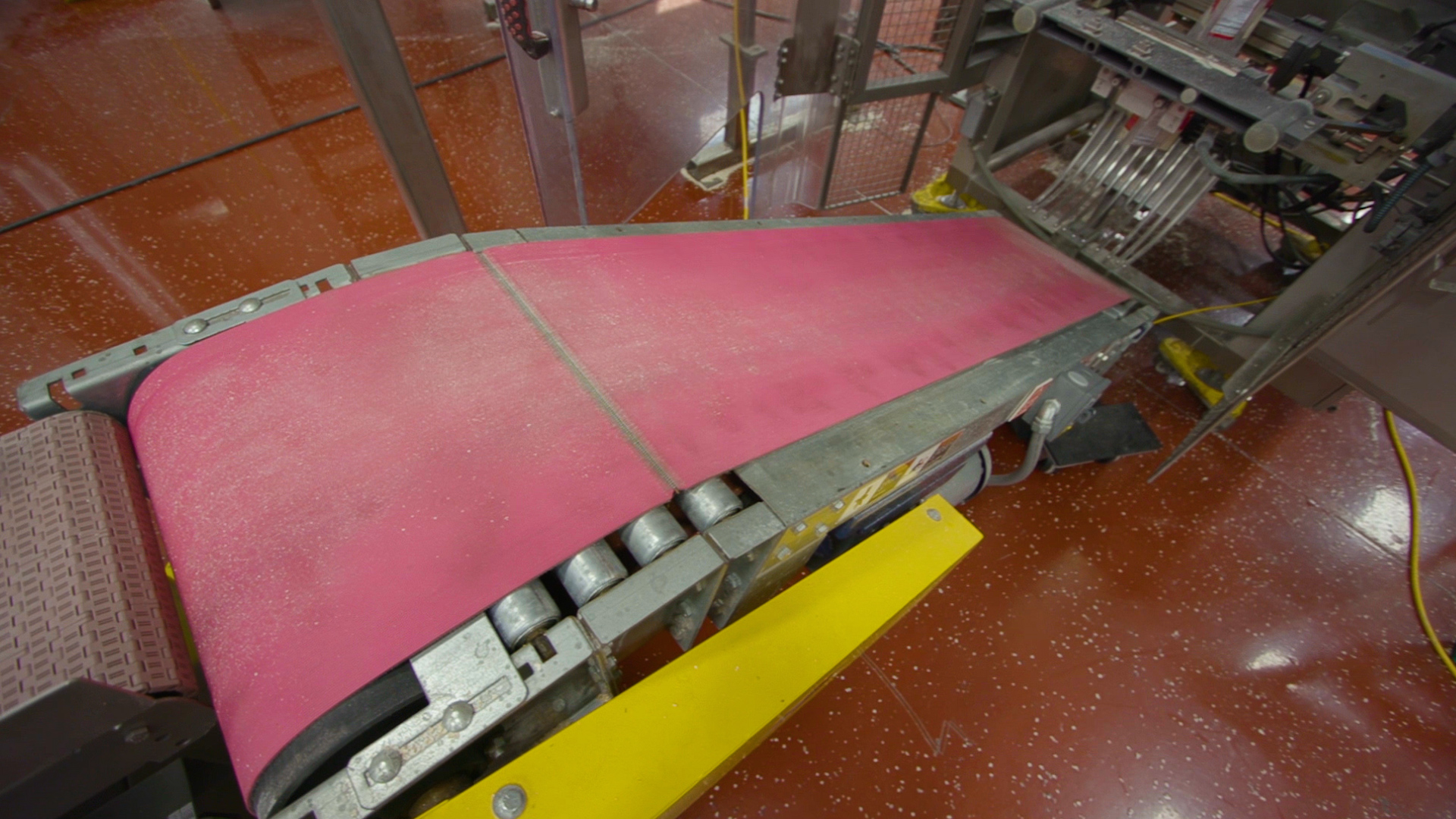
- Combi 2EZSB Ergopack Case Erector and Sealer
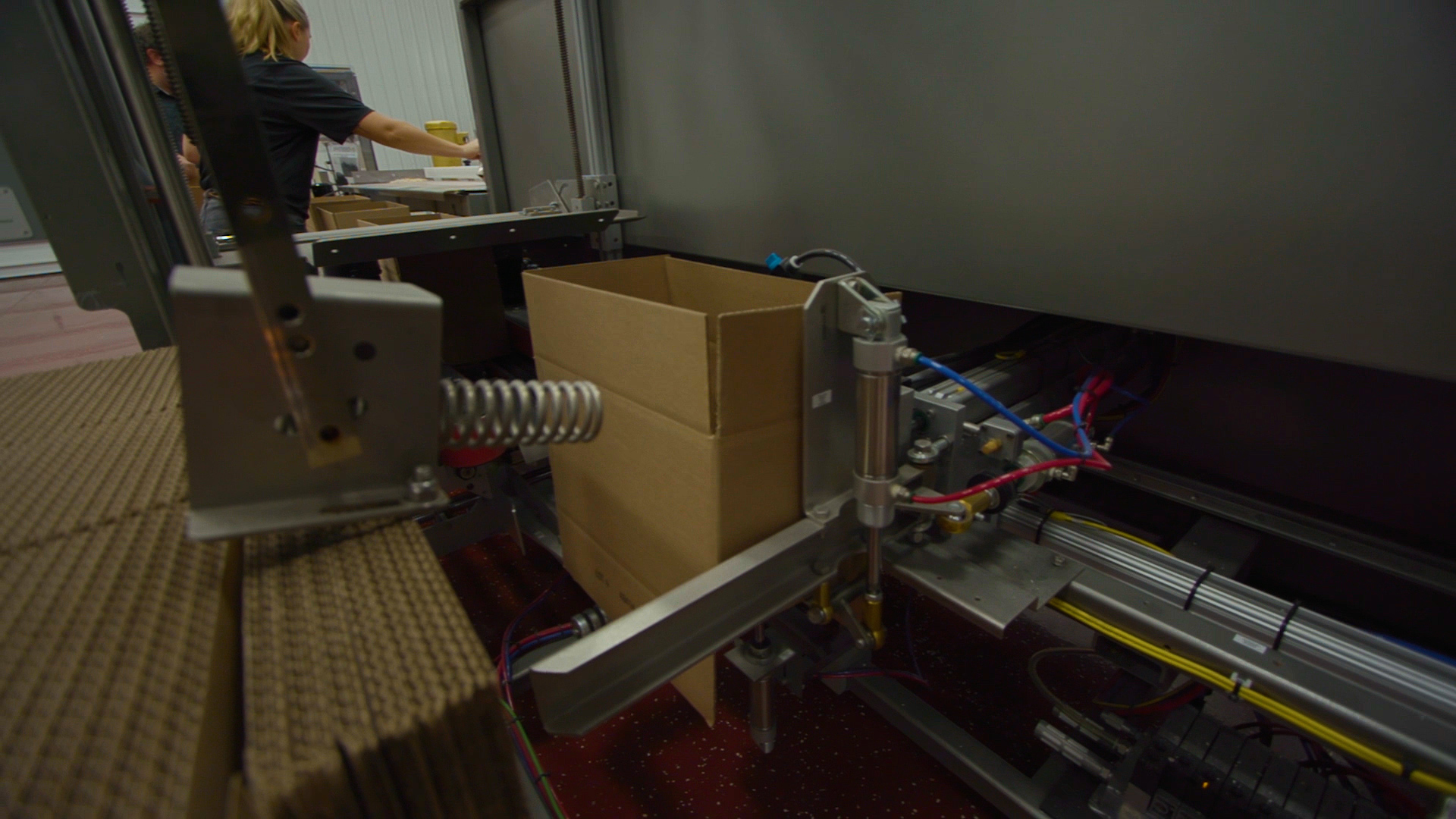
Once pieces were selected, SIGMA Equipment then set up a rental agreement for the Bosch SVB 3601 Vertical Form Fill and Seal Bagger and the Combi 2EZSB Ergopack Case Erector and Sealer with the rent-to-own option offered by SIGMA Equipment. The customer then purchased the Smalley Stainless Steel Bucket Conveyor 12" Wide, Multipond MP 1601-FF-(2x8) SS Combination Weigher and the Belt Incline Conveyor 16" Wide x 60" Long as well as purchased the custom mezzanine and stairs.
Utilizing SIGMA Integration
While the equipment was being selected, Scott Birge brought the SIGMA Integration team in on the project, and together they began preparing for seamless integration. Since all of the equipment pieces were already located in the SIGMA Equipment facility, they could be quickly transitioned into the 50,000 sq ft. SIGMA Integration reconditioning shop to begin the process of integration and combine them into one workable production line.
With the help of SIGMA’s Shop Manager, as well as two technicians, Ryan Finney, and Quaid West, the team began to pull the pieces into the shop and reviewed the machines for any repairs before beginning the integration process. “Because we work with used equipment, we don’t always get to see what the equipment was like in its previous life. We collect as much information as we can and do a lot of research before we list equipment on our website, but once we get into the piece we are able to see the intricacies of the equipment and get a feel for any repair work that needs to be done prior to the integration” said Ryan Finney, Integration Technician.
After the evaluation of the machine, the SIGMA Integration team determined that the following work would need to be done to the equipment prior to integration:
- Smalley Stainless Steel Bucket Conveyor 12" Wide - Raise the bucket elevator to be able to fit into the Mutipond MP 1601-FF-(2x8) SS Combination Weigher
- Multipond MP 1601-FF-(2x8) SS Combination Weigher - calibration for loading the right volume of oats into the bag as well as removing the 2-sided funnel so the oats could flow singularly into the former
- Bosch SVB 3601 Vertical Form Fill and Seal Bagger - fabrication of a new former and removal of redundant electrical circuitry
- Belt Incline Conveyor 16" Wide x 60" Long - set to size to receive the bags from the Bosch SVB 3601 Vertical Form Fill and Seal Bagger and move into the Combi 2EZSB Ergopack Case Erector and Sealer
- Combi 2EZSB Ergopack Case Erector and Sealer - set to size for the specific boxes TKN Farms would use after bagging the oats
While the team began to work on the equipment to prepare it for integration, SIGMA worked with outside vendors to begin designing the mezzanine and stairs that would need to be fabricated to access the Multipond MP 1601-FF-(2x8) SS Combination Weigher.
As Ryan Finney was working on the Bosch SVB 3601 Vertical Form Fill and Seal Bagger, he noticed a lot of extra circuitry and components in the control panel that made troubleshooting the machine difficult. “We knew this would also be difficult for any customer and decided to remove as much of the extra circuitry and components as possible. This put less current through the machine. It also freed up space to put in transformers in the control panel so we could bring one voltage source into the control panel and step the voltage down for the Smalley Stainless Steel Bucket Conveyor and the Multipond MP 1601-FF-(2x8) SS Combination Weigher. By doing this it let us piece together and manage everything under one control panel, ultimately making the machine and integration more user-friendly” said Finney.
The next steps were to build a new former made for the Bosch SVB 3601 Vertical Form Fill and Seal Bagger. “We spoke to Bosch and were getting information on what a timeline would be to get a new former directly from the Original Equipment Manufacturer (OEM) and because the former would have to be built in the Netherlands and shipped back to us, we were looking at a 6-8 month build-out. That wasn’t going to work with our timeline so we ended up working with Formers International to build the former,” said Finney.
Once SIGMA Integration received the former and placed it on the machine, the team began running the film of the product and forming the bags and noticed that the film provided would not work for the type of seal the customer requested. Originally, a lap seal was needed for their equipment where the exterior of the film provided was sealed onto the interior of the film. However, the type of film provided was not able to perform that type of seal. After collaborating with the team, we determined a fin seal, where both interior edges of the film are sealed together and then the fin is folded over, would be what would be needed for the film. This meant SIGMA Integration would need to rebuild the former.
“We learned a lot in that instance, we couldn’t tell from the film that a lap seal wouldn’t work, but once we tried to run the product and we had to do some additional research, we determined the fin seal would be a better approach,” said Ryan. This was a learning opportunity for all sides because it required everyone to go back to the drawing board and rebuild the former. This caused some extensions in the projected timeline but ultimately it was decided it would be necessary to rebuild the former and then move forward.
SIGMA Integration received samples of the product in its final bag from the customer and sent them over to Formers International where they were able to help provide a solution. Once the former was rebuilt and sent back, SIGMA Integration again placed the former and noticed that the seal was accurately forming to the bag, filling it with the product, and sealing it. After checking the product they noticed the printing was off, causing the printed film to look off-center by about 1 inch. Ryan Finney worked with his team to try to create a smaller former to allow the bag to correct itself. However, this was also not a final solution and after looking at the film again, it was determined that we would need an off-set film seal. “This is where the pinch point is centered on the back of the bag and the image is centered on the front. It shifts the film and makes the bag flat and centered,” said Finney
A final former was built and created by International Former when they realized that there had been a mixup in creating the former and once received, SIGMA Integration was able to get the machine up and running correctly almost immediately. Ryan Finney added: “It ended up working out in the end for the client because while we were reconfiguring the former, we were able to add an inkjet coder to the equipment. This lets them add the lot and expiration date on the bags. The good news is that the machine previously had a coder on the back so we kept the pieces in case we needed them and put them back on the former and added more rollers to the film. This made tracking the film a bit more difficult and required more micro-adjustments but overall we were really pleased and so was the client.”
Quaid West, Integration Technician added, “The final piece of the project was to receive the mezzanine and stairs from our fabricator and determine where to cut the hole for the Multipond MP 1601-FF-(2x8) SS Combination Weigher. Once we cut the hole we then had to design and fabricate a chute from the scale to the former. Previously, the scale had a double chute, and since we just needed one for our current setup, we needed to adjust for that as well as cut it in half and remount. Finally, we had to cut the funnel and remount it so maintenance could be performed and the machine could be cleaned if needed.”
Once completed the project was filmed and presented to confirm the machine would run at the capacities the customer needed. After confirmation, we could begin the final payment process and coordinate logistics as well as set up and training in Canada once the equipment arrived at the customer’s facility.
Results
Our customer chose SIGMA Equipment and SIGMA Integration for their expertise in the industry as well as the large stock of inventory. Through the continued communication with clients, SIGMA was able to find a piece of equipment that the customer needed and walked out of the project with a fully integrated equipment line ready to bag and pack their product. With this new production line, they can test a smaller and more direct-to-consumer product. Because SIGMA Equipment and SIGMA Integration are part of the larger SIGMA Group, they are able to utilize their services together to provide a complete solution.
“This was a fantastic team to work on this project with.” said Ryan Finney, “We were able to really collaborate not only with our team but with the customer and our vendors in order to find a solution to every challenge that came up.”
“We were able to think on the fly with our team and that’s what we have to do in our industry. And we run the risk with that with used equipment. We are taking something that the machine wasn’t originally built for with the OEM and turning it into something that our customers need. And we are giving the equipment a second life. That’s what we excel at here at SIGMA,” said Ryan Finney.
Learnings
SIGMA Integration learned that the key to success is to get samples in the early stages of the project. Not only the raw material but also the finished product. “I think both teams learned a lot, but one of the most important things that can help our team is to get the raw product and finished product as early as possible. We were able to learn a lot about how the bag was formed and sealed when we were able to actually hold it in our hand,” said Ryan Finney. “ We were able to have a wider timeline for this project because the customer didn’t need the line immediately and that gave us the time to really refine our process and make improvements that we may not have been able to do otherwise”.
Conclusion
Overall the success of the project lies in the customer’s satisfaction. While there were setbacks and challenges, the SIGMA Equipment and SIGMA Integration teams talked daily with the customer and their team to keep them up-to-date and were able to provide an affordable and sustainable solution to their scaling needs.
SIGMA Integration and SIGMA Equipment are ready to help you take the next step in your integration needs.
To contact SIGMA Equipment for your equipment needs, click here:
To contact SIGMA Integration for your equipment needs, click here:
